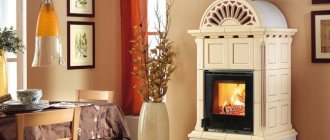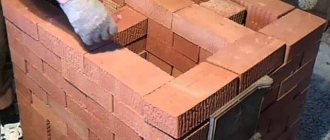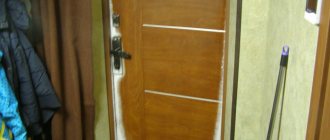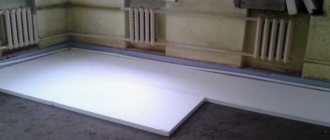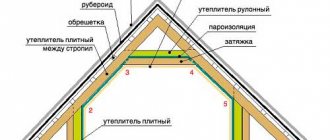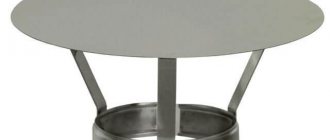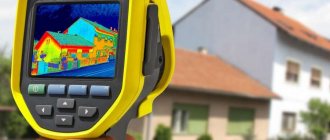Let's consider the types and principles of operation
In an apartment building, a vertical ventilation shaft box starts in the basement and goes to the roof. In each apartment the branches end with bars.
There are three types of ventilation in buildings:
- Natural outflow of air due to pressure differences in the mines.
- Forced draft on fans for air inlet and outlet. With an autonomous system, the fan operates on the façade of the building. Supply valves are installed. With a centralized network, supply and exhaust units create draft in the house around the clock.
- Combined options. Air is supplied forcibly and naturally leaves through the shaft. In the second option, it comes through the windows and is removed using exhaust fans.
Connecting a hood with your own hands disrupts standard ventilation. During installation, a hole is punched, but the section of the shaft does not change. To improve air exchange, install a flapper valve. It blocks reverse draft when the hood is operating. After it is turned off, the valve opens.
Natural and forced ventilation
SNiP establish the following standards for kitchen ventilation systems:
- The air exchange volume for kitchens equipped with gas hobs must be at least 100 m³ per hour.
- For kitchens equipped with electric stoves, this figure is slightly lower - 60 m³ per hour.
There are two types of ventilation systems used to provide air ventilation in kitchens - natural and forced.
Natural and forced ventilation
Natural ventilation
Natural ventilation systems operate on the principle of pressure differences between indoors and outdoors. In this case, no mechanical devices, such as fans, are used to create air flow. Air contaminated with harmful gases is removed from the room through ventilation shafts, usually installed in the thickness of the walls during the construction of the house.
Attention! For natural ventilation to work effectively, the volumes of exhaust air must be equal to the volumes of supply air. Supply ventilation is responsible for the flow of fresh air into the premises.
There are two types of natural ventilation:
- Organized. Air enters through specially designed supply ventilation ducts and valves.
- Disorganized. There are no special devices for air flow from outside. The influx occurs through leaks and microcracks in window frames and doors, walls and ceilings.
With the beginning of mass use of plastic windows and metal entrance doors equipped with sealing gaskets, problems with unorganized ventilation may arise. To ensure the flow of sufficient volumes of fresh air, it will be necessary to install recuperator valves mounted in walls or window frames.
The advantage of natural ventilation is its low cost and completely autonomous operation, independent of the availability of electricity or mechanical fans. The main disadvantage is the insufficient air exchange rate, which often does not meet the requirements of SNiP for kitchens.
Forced ventilation
Mechanical devices - fans - are used in forced ventilation. They are usually mounted on exhaust ducts, but additional installation of fans near the supply openings is possible. If the ventilation ducts are long, additional fans are installed inside the air ducts.
Wall Fan Design
An undoubted advantage of forced-type ventilation systems is their greater volume of work per unit of time than natural ventilation. Thanks to this, the minimum volumes of air exchange established by building regulations are easily ensured - up to 100 cubic meters. m per hour if there is a gas stove in the kitchen. The downside is the dependence on the availability of electricity and uninterrupted operation of fans.
We recommend that you read: 5 silent modern hoods for the home - criteria for the right choice
Classification of hoods
During installation, the type, features of the device, and type of fastening are taken into account. Exhaust devices operate in two cleaning modes.
- Forced exhaust - contaminated air flows are directed through a pipe from the room to the shaft. Flow hoods are highly efficient.
- Flow circulation - air masses pass through carbon filters.
Kitchen hoods connected to ventilation are installed with two types of outlets.
| Type of tap | pros | Minuses |
| 1. Air duct made of plastic (PVC) | It is made in the form of an elastic pipe or narrow elements. It has an aesthetic appearance, is compact, and can be installed without an additional box. PVC pipe does not make noise and does not resist air flow. | The complexity of assembly will cost more than corrugation. Hard plastic boxes hum and vibrate. |
| 2. Aluminum pipe (corrugated) | The material is convenient for self-installation. Bends to connect to the desired size hole. Doesn't make noise. | Not aesthetic appearance. |
Flat, compact devices with a filter are simply mounted without connection to the general ventilation system, but have low power. Dome “umbrellas” take first place among units in terms of power.
Manufacturers produce fireplace hoods with wall mounts, corner hoods for corner slabs, and island hoods with ceiling mounts for slabs in the center of a large room. Material – “stainless steel” or enameled steel, less often – plastic. For small rooms such as the kitchen, built-in retractable panels with a pipe are created.
Types of hoods
Modern hoods have differences in design. There are options for desktop, wall-mounted, built-in and island devices. Wall mechanisms come in rectangular and round configurations, covering the plane of the entire slab. It's hard not to notice her when you get into the room. Designs of this type should be combined with the overall appearance of the entire room. Built-in options are mounted in cabinets, they are practically invisible, which gives grounds for choosing a model of any plan.
A tabletop hood does not require installation; you can simply place it near the stove and plug it into the network.
Tabletop hoods are located near the stove or cooking surface. They are ideal for rooms with small areas. Island mechanisms are placed in the ceiling area, in the middle of the kitchen. They are perfect for slabs that stand separately from the set.
The nature of the installation work is directly dependent on the type of product purchased. That's why it's so important to choose the right option. Modern hoods come in three types: combined type, exhaust type and recirculation type.
The classic version of such a device is represented by a product that discharges air masses into the ventilation hole. Here we can talk about the exhaustive nature of her work. As air passes through the filters designated in the system, it is filtered and returned back. This is a type of recycling plan. The first option is represented by a conventional hood, the second by an air purifier. There is not much difference between them. Moreover, the bulk of modern systems are represented by combined varieties of such devices. They can operate in any of the above modes. When choosing the appropriate option, you should proceed from the characteristics of the kitchen and the current situation.
Criteria for selecting exhaust equipment
Before purchasing, it is important to prioritize: comfort or savings. Design, power, sound insulation and type of adjustment significantly affect the price. The choice is based on 4 main criteria.
- Power. To determine it, you will need a calculation taking into account the size of the room.
- Noise. Turn on the device to assess the noise level. For an apartment, the recommended value is up to 50 dB. Silent models are equipped with three fans or a casing made of sound-absorbing materials.
- Material and type of air duct.
- Additional accessories: lamps for illuminating the work area, simultaneous automatic switching on together with the stove, timer for stopping by time, control panel.
Some models come with a choice of operating modes. If you plan to purchase a circulation device, then you should choose one with a filter clogging indicator.
How to determine the power and performance of a device? The calculation can be made as follows - how much air is purified in 60 minutes. According to Russian standards, air circulation should be carried out 12 times per hour. To calculate power, use the formula:
S (room area) * H (wall height) * 12 = M
For example, what power is required for a kitchen with an area of 8 m2, with walls 2.8 m high?
8 * 2.8 * 12 = 268.8 m3.
If bends in the pipe or a long shaft are planned, then add 30%. Taking into account the power loss we get:
268.8 m3 * 1.3 = 350 m3.
Air duct installation: features
To keep the air in the kitchen clean, hood ventilation is necessary. It is very important to correctly install the air duct, which can be plastic, aluminum, or made on a semi-rigid base. The first type is much more reliable and costs much more than the other option.
Wall-mounted hood with ventilation.
Installing a plastic duct is much more difficult. For such purposes, you should acquire adapters, a ventilation grille, and horizontal and vertical bends in the “L” configuration. You can’t do without special gearboxes that provide connection of round diameter to rectangular shapes. They perform the function of an air duct with an exhaust outlet.
The kit contains a fairly large number of elements that help carry out installation work of any level of complexity. It will not be easy for a novice master to carry out such actions, but such structures are designed for an indefinite period of use and make virtually no noise during operation.
Marking
The distance from the stove is specified in the instructions. When marking, you need to mark the center of the hob. The hood should be located along this axis. Different slabs have their own mounting heights.
It is forbidden to increase the lower limit due to high temperatures, simply put, so that the exhaust device does not melt. The upper limit is optimized taking into account the height of the person who will subsequently use the device. It is important to make the connection to the ventilation duct with a minimum number of bends. Each turn of the pipe reduces thrust by 10%.
How to properly install a hood in the kitchen
In the kitchens of many houses and apartments you can find a hood installed above the hob. Its purpose is to prevent harmful chemicals and steam produced during the cooking process from spreading throughout the kitchen and other rooms. All harmful substances, along with polluted air, are captured by the hood and removed through the ventilation shaft to the outside.
However, not many people know that when installing a hood, you must follow the rules.
So, the hood must be located at a certain height above the level of the stove. For gas hobs this distance is at least 55 cm, and for electric stoves - at least 35 cm.
When installing an autonomous hood that is not connected to ventilation ducts, you should remember that the built-in filter is capable of retaining only aerosol contaminants. The hood filter will not be able to protect against gas leakage from a cylinder or gas line, or neutralize carbon monoxide.
Therefore, the correct installation of a kitchen hood is always done by connecting the device to the ventilation shaft. Otherwise, it will not be able to remove harmful chemical components formed when cooking on the stove.
Installation features taking into account the type of fastening
Watch the video: how to install it in the kitchen yourself
Installing a hood with your own hands. YASAMMOGU-TV
Suspended flat hoods are not connected to the air duct. They are supplied with elements for fastening to the bottom of the cabinet. The attachment points are marked with a pencil. Drill recesses. The filters are removed to expose the mounting holes. The fasteners are assembled and attached. The hood is checked by level. All that remains is to connect to the power supply through an outlet. Wall-mounted devices are mounted on metal corners. The body rests on a frame, which is attached to the wall with screws. Self-tapping screws - studs - are used if there is a gas pipe running along the kitchen wall. The body is fixed to the stud with a nut at the required distance. If necessary, the distance is increased with wooden blocks.
Built-in hoods are located in a wall cabinet above the stove or on a shelf in your kitchen. For fitting, the body is placed in a cabinet. They measure the distances, check the level, in the center. If the fitting was successful, mark the holes. The cabinet is removed, passages are drilled in it to lead to ventilation.
Island devices for creating traction are fixed to the ceiling. If the air duct does not reach the ventilation, you can install a circulation exhaust device yourself. With any type of equipment, it is important to create a direct path to the shaft without kinks.
And if the installation of equipment is carried out with your own hands, then at this moment you need to pay special attention.
How to connect to a ventilation duct with your own hands
You will need a corrugation (box), a grille, a valve, and tools. With a direct connection, the corrugated air duct is combined with the ventilation duct. For a clear connection, a round grille is installed. A corrugated pipe can disrupt the appearance of the kitchen. It is masked in a plasterboard box or box.
Read the article about corrugated pipes and their use in kitchen exhaust systems.
Watch the video: how to install an exhaust hood in the kitchen yourself
HOOD and VENTILATION - 1. Best combination.
PVC structures are assembled from pipes; if there are turns and bends, then it is necessary to connect the corresponding corners, then the resulting structure is brought to the ventilation hole. It is advisable to prepare a diagram in advance. There should be a minimum of turns.
The kit includes corners for turns, adapters, wall panels, and fasteners. It is necessary to correctly calculate the size of the plastic structure. Joints and connections are self-treated with sealant.
Steps for connecting an exhaust device with your own hands
Installing equipment built into a cabinet is more difficult. To do the job correctly, we follow the following sequence.
- We manufacture or purchase an anti-return valve (firecracker).
- We place the housing in a cabinet above an electric or gas stove in the kitchen. We fix it, cover the cracks with sealant or special foam. We glue the body to the cabinet to neutralize resonance. We install the firecracker. Mark the holes on the cabinet.
- We remove the closet. Using an electric jigsaw, we cut out the excess in the bottom stack and, if necessary, in the internal shelves according to the markings.
- We connect the air duct. We cut off the corrugation, leaving a reserve. We cut the corners and bend them outward. We fill the joints with silicone sealant.
- Above the kitchen cabinet we attach a box to connect the corrugation to the ventilation shaft. We fill the joints with silicone and foam large cracks.
- We fasten the hood using self-tapping screws or dowels. We put on a kitchen cabinet.
- We attach the corrugation to the hood with a special clamp. We treat the connections with sealant.
Grounding and grounding, installation of sockets
Entrust this work to an electrician! During installation, the hood is connected through three wires: phase, ground and neutral. Grounding protects against voltage surges. This is a yellow wire with a green stripe.
If there are Euro sockets, we use a grounding loop. The wire is connected to terminals with stripes or the Ground (GND) mark. If there is no grounding connector, it can be made from a wire connected to a part of the metal housing.
Euro sockets are not available in all apartments. To ground, the wire is connected to a dead neutral in a pipe or bus under the electrical panel. The neutral wires are located on the pin. A multi-channel wire (with a cross-section of 2.5 mm2 or more) is pulled from it. The hood is connected to a 6.3A circuit breaker.
Dangerous! It is impossible to disconnect the wires connected to grounding. The new wire is laid over the old ones and tightened with a nut. On a smooth surface, you can secure the contacts with a clamp. If you are not an expert in this matter, contact a professional!
We select the socket taking into account the fact that most exhaust appliances have three-core wires. We install an outlet in the kitchen above the cabinets at a height of 2 meters. It should not be placed near the sink, stove or cluttered with appliances. In an open place, the socket is hidden in a special box.
Installation of the supply valve
When installing a supply valve, the general house ventilation should not be blocked. Therefore, a grille with a valve and a place to secure the air duct is installed. Instead of a grille, a check valve with an anti-return mechanism is suitable.
When the valve is closed, the kitchen area is ventilated as usual through an opening or window. When the fan starts, the clapper closes it. The air is locked in the channel, the reverse draft does not occur. The movement of the valve is controlled by a spring. You buy a firecracker, sometimes you make it yourself from aluminum, galvanized steel or tin.
When preparing the holes for the hood, we cut a square in the top wall of the cabinet ourselves and add a margin of 3-5 mm for the firecracker. We install the check valve in the ventilation hole and treat the edges with sealant.
Legality of connecting a hood in the kitchen with general house ventilation
The builders of old high-rise buildings did not take into account that future residents would install exhaust equipment many years later. Therefore, they did not provide individual kitchen ventilation ducts. Connecting exhaust devices in such houses changes the pressure in the system. People cook or smoke in the apartment, and the aromas attract the neighbors. What does the law say about this?
SNiP 01/41/2003 allows you to combine different ventilation methods. Mixed systems can coexist with natural and mechanical ones. It is allowed to connect to the individual exhaust duct of the apartment.
If the entire system is functioning normally, then foreign odors should not reach the neighbors. Problems arise due to installation errors. The legality of the connection is beyond doubt, but before making it, you must call a ventilation specialist.
Exhaust device for kitchen without connection to ventilation
Flat or suspended hoods with a filter serve in two modes. The air is passed through a filter (recirculation) or taken outside. Filters are changed every six months. Kitchen hoods without a ventilation connection are not difficult to install. It is necessary to study the fasteners, mark the places of fastenings on the walls, taking into account the distance. Drill, install dowels, screw on awnings. Equipment is attached to them.
Hoods with filters have low performance. To increase power, you can install an additional fan into the air duct yourself. Install adapters and power cord. Over time, the built-in fan can be replaced with an external one with performance up to 2000 m3/h.
Air supply devices are installed in the kitchen: window fans, ventilators. In old buildings, sealed windows and doors disrupt natural air exchange. The craving disappears, mold and moisture appear. The ventilator is mounted on a window or wall. It allows a limited volume of air to pass through and creates a healthy indoor microclimate.
Watch the video
Purpose of kitchen ventilation
During the cooking process, a whole bunch of dangerous chemicals are released into the air.
Among them are:
- Carbon monoxide (CO), better known as carbon monoxide. An extremely toxic substance, even in small concentrations leading to severe poisoning of the entire body. And when the concentration of CO in a person’s blood reaches 5 ml per liter, almost instantaneous death occurs. The main danger of carbon monoxide is that it has neither color nor odor. Therefore, its dangerous concentration can be detected only by a sharply deteriorated state of health - a severe headache accompanied by vomiting. CO is released during any combustion, including when frying food on a stove fire.
Attention! Kitchen hoods equipped with replaceable filters are not able to protect against carbon monoxide. To neutralize it, only a ventilation system that removes polluted air outside is suitable.
- Natural gas (propane, butane, methane) is another dangerous chemical component present in the kitchen. It is commonly used as an energy carrier for gas cooktops. But in high concentrations it can not only cause human poisoning, but also cause fire and explosion. Every year, hundreds of people around the world become victims of gas leaks that could easily have been avoided with an effective ventilation system.
- Carcinogens are volatile substances released into the air when foods are fried or fats are burned in a frying pan. This is the same child that stands in the kitchen while preparing food, and then settles on the walls and ceilings of the room with a greasy coating. Carcinogenic substances, although they cannot lead to immediate death of a person, like CO or propane, are capable of accumulating in the human body. When these substances enter the liver, kidneys, and lungs, they ultimately cause severe pathologies, including cancer.
- Water vapor is released when cooking soups or boiling a kettle. By itself, it is absolutely harmless to humans. But in high concentrations it condenses on the walls and ceilings of interior spaces, causing the appearance of fungus and mold. The fungus significantly reduces the service life of finishing materials, and can also affect the load-bearing elements of the building structure. Microscopic spores released by mold into the air cause severe allergic diseases - dermatitis, asthma, chronic bronchitis.
We recommend that you read: Making a household air recuperator with your own hands
Therefore, it is necessary to equip each kitchen with a ventilation system, in full compliance with the requirements and standards of SNiP and GOST. This will allow you not only to maintain hygiene in the kitchen, but also to preserve the health, and even the life, of the inhabitants of the apartment.
Kitchen hoods with connection to ventilation
If the house does not have a dedicated ventilation duct for the kitchen hood, it will have to be integrated into the general ventilation.
These are supply hoods. They operate in the mode of exhausting air into the air duct. Such models are 100% capable of removing odors and steam from cooking food. Also in retail chains you can find modern air-purifying devices of a combined type. They can operate in air recirculation mode and exhaust air into the ventilation shaft.
Classification of hoods by installation method
- Built-in. Mounted in a kitchen cabinet, installed above the stove.
- Hanging. Installed on the wall.
- Island. Attached to the ceiling. They are located in the middle of the room.
- Angular. Mounted in a corner.
Any of the selected models, in terms of adaptability to a specific room and design, must comply with current safety regulations.
Corrugation installation: nuances
If the ventilation is located directly above the stove, the process of connecting it to the hood is done through an adapter. In this case, an air duct is installed. Having chosen a smooth base of a square or round configuration, care should be taken to purchase a connecting elbow. It will help get rid of corners. You also need an adapter that is attached to the hood and to the ventilation hole itself. The connecting elements are treated with sealant - the result is a rather attractive and neat structure. It can be placed under the ceiling, without the need for additional decorating elements.
Installation of corrugations for the hood.
The desire to install an air duct in a closet allows you to use corrugation. This is an inexpensive material with which there are no installation difficulties. There is no need to use adapters; the corrugation itself bends perfectly, going around corner areas. Before installing it, it needs to be straightened. Manipulations of this kind can reduce the amount of noise produced during the operation of the mechanism. To choose the correct size of corrugated pipe, it is important to take into account the diameter of the outlet located on the hood. The corrugation is installed using a clamp on the device, and on the ventilation - with a grille.
Advice. Over time, soot, soot and grease accumulate in the air duct, which must be cleaned regularly. This should be done approximately 2 times a year. You can resort to completely replacing it, because otherwise, air movement will be hampered and there will be a risk of fire.
Of course, it is not difficult to place the corrugation in the ventilation, but it will not look presentable and will not stand out with excellent performance indicators, like, for example, plastic samples. It is not very attractive from the point of view of external indicators.
The corrugation does not decorate the room at all, striking the eye as a bright spot.
Working hood in the kitchen.
The plastic system has a more noble appearance; its design features allow it to be installed on top of cabinets so that it remains almost invisible. A corrugated duct almost always makes sounds during operation. To reduce such unpleasant moments, preference should be given to materials of short length. As a result, sound vibrations will be minimized and the operation of the hood will improve. Sharp bends in the pipe should be avoided here.
A hood installed in the kitchen will provide maximum performance if the connecting channel for air exhaust is quite large. As a result, the masses will quickly go into the hole, and the effectiveness of such a device will be very high.
Hood performance
This indicator primarily affects the quality of indoor air treatment.
Productivity determines the volume of air passed in 1 hour. According to sanitary requirements, it is necessary to ensure 12-fold air exchange in the kitchen.
We use the formula:
P x V x 12 x 1.3
where P is the kitchen area, 1.3 is the equalizing factor, 12 is the air exchange rate, V is the height of the room.
Choose models with power exceeding the calculated one by 10 - 15%.
Hood operating rules
In order for the air purifier to serve flawlessly for many years, it is important to comply with the requirements for safe operation. Consider these important rules:
- Hood installation . The required distance from the surface of the stove is at least 70 cm. This measure can prevent damage to the device from exposure to high temperatures when used with gas and electric stoves.
- Presence of draft in ventilation . We check this parameter before installing the device. If the air is moving poorly, it is better to clean the shaft.
- Air duct installation . An air duct that is too long and straight increases the noise level of the device and significantly reduces its performance.
Types of air ducts
- Power regulator . Available on almost all modern devices. It is not recommended to use maximum power immediately after switching on. It is worth starting operation with a minimum air flow speed, gradually increasing it. This creates ideal conditions for soft operation of the engine, which is less damaged by starting currents.
- Surface care . It is recommended to use mild detergents in combination with water. Do not over-water the device with cleaning solution. For safety reasons, experts advise carrying out wet cleaning by disconnecting the hood from the power supply.
Grease stains are removed with a soft sponge or cloth, without the use of abrasive
- Connection to the power supply network . For a safe connection, it is important to create conditions under which the device cable does not overheat from a working stove.
- Timely and regular replacement of filters . Or their cleansing. On average, replacement is required once every 3-6 months. A rarer one is not recommended due to the high load on the motor.
Grease filters need to be washed when they are visually dirty.
